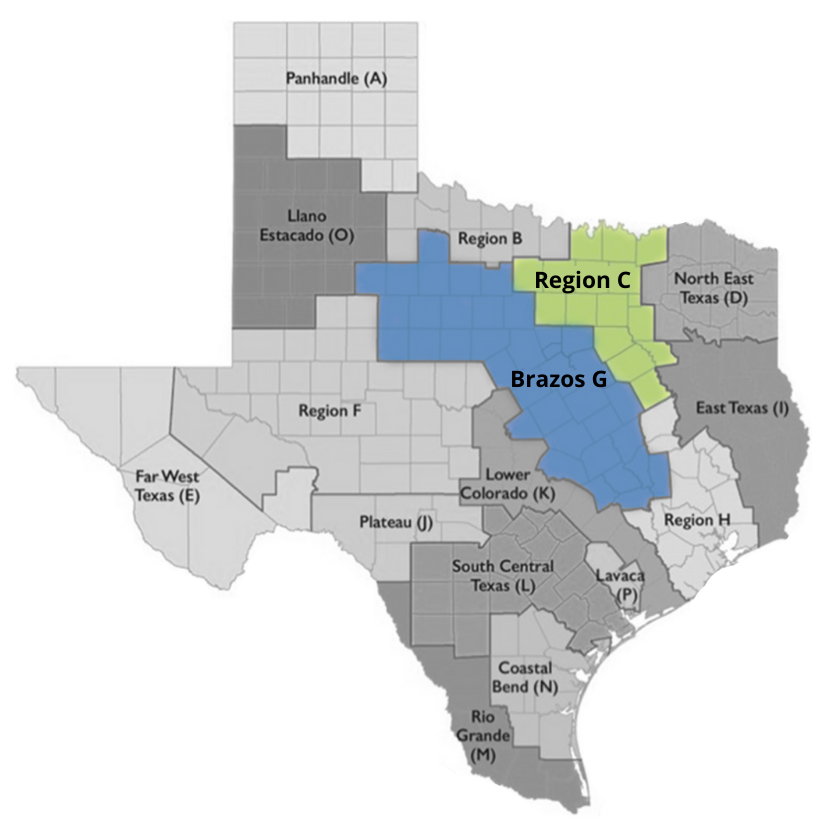
State Water Plan

Since 1997, water planning in Texas has been based on local involvement from 16 regional water planning areas. Prairielands GCD is within the Brazos G regional planning group (Johnson, Hill and Somervell counties) and Region C regional planning group (Ellis County). During each five-year planning cycle, regional water planning groups, supported by the Texas Water Development Board, evaluate population projections, water demand projections, and existing water supplies. Each planning group then identifies potential water shortages under drought of record conditions (water needs), recommends water management strategies (with cost estimates) to address those potential shortages, and determines the socioeconomic impacts of not addressing the identified water needs.
This information is incorporated into what becomes the State Water Plan. The TWDB adopted the 2022 State Water Plan in July 2021, which marks the fifth state water plan created under Texas’ regional water planning process. The primary goal of the State Water Plan is to make sure that water users in the agricultural sectors, manufacturing, irrigation, livestock, and municipal users have the water that they need to meet their demands during drought conditions and to provide for economic activity, public health and welfare, and protecting natural and water resources of the state.

The 2022 State Water Plan projects Texas’ population will increase 73 percent over the next 50 years, from 29.7 million in 2020 to 51.5 million in 2070. Along with that growth comes a projected 9 percent increase in total water demand. Texas’ existing water supplies—those that can already be relied on during drought—are projected to decline 18 percent during this time. To meet potential water shortages during a drought of record, the plan contains 5,800 strategies, such as conservation and reuse, aquifer storage and recovery, brackish groundwater and seawater desalination, and surface water strategies.
Prairielands GCD actively participates in the Region C and Region G regional water planning processes to stay abreast of water demand projects and supply strategies in the District and to coordinate the District’s groundwater management strategies with the regional water planning groups and foster an understanding of regional management practices.
